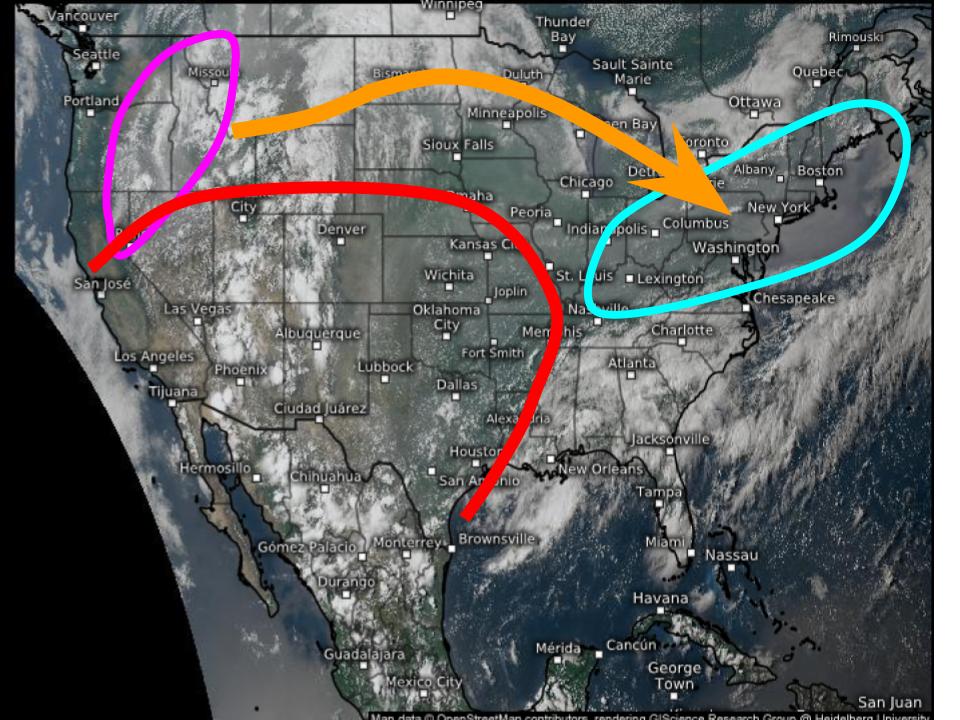Distant Fires Prompt Far-Reaching Air Quality Concerns
Quick blog today!
Unseasonably widespread wildfires out West have been raging for days, destroying huge swaths of forest amidst extreme heat and anomalously low soil moisture. Most of these fires have fortunately been confined to thickly wooded, sparsely populated parts of the Northwest, and so the overall impact to society has, thus far, been minimal. But a fascinating, unhealthy chapter in the early-season fires threatens air quality as far away as the central mid-Atlantic, turning skies into haze and the sun a deep red.
Fire begets smoke. When fires span hundreds of thousands of acres, as the combined conflagrations in the Northwest US and southwest Canada currently do, an incomprehensible level of smoke results.
As this smoke infiltrates the midlevels and drifts east amidst the subtropical jet, a fairly regular occurrence in the midst of a severe wildfire season, it can shade sunsets with a sharp red contrast as far away as the east coast. Impacts are typically limited likewise because of the tendency for air at the jet level to stay there, thousands of feet above our heads and cities. This week, though, a very unusual result of the prevailing atmospheric pattern is this wildfire smoke being pushed vertically down to the surface across parts of the mid-Atlantic. This occurs as subsidence, or sinking air, from a large-scale high pulls the midlevel environment to the surface.
A glance at satellite shows huge swaths of smoke emanating from fires out West today, careening around a massive ridge before sinking. The smoke-filled Northeast and mid-Atlantic results.











